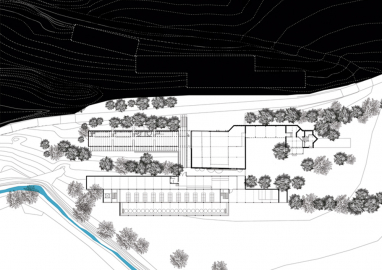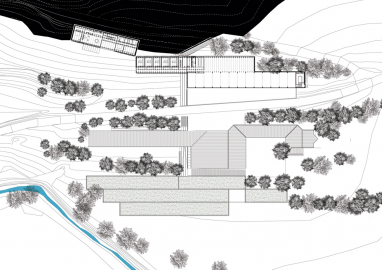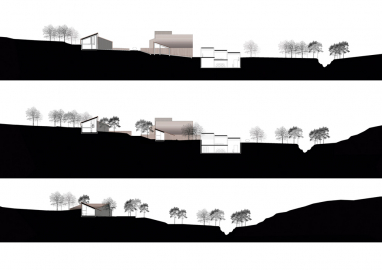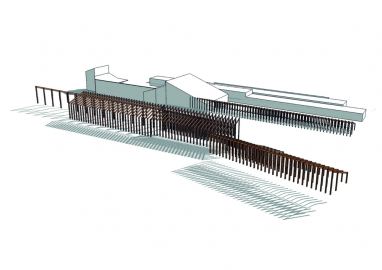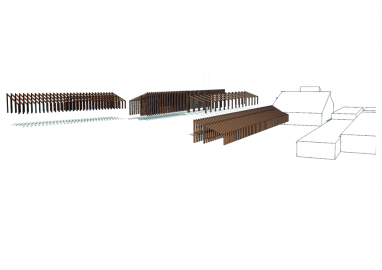Extension of a Winery
Architecture, landscape, vine cultivation and wine production are thought of as a whole in which quality is constantly seeked : an unique approach in order to compose a total work.
How to insert, in this exceptional and emblematic natural site of the Montpellier region, a productive wine estate and fit in large agricultural buildings ?
Thirty years ago, a young agronomist engineer settled in the Pic Saint Loup valley, 20 km away from Montpellier, to create his own vineyard in that site he loved.
The Domaine de l’Hortus agronomists and mICHELE&mIQUEL architects have worked in close collaboration since that time in the pursuit of quality of both architecture and landscape.
It all started with the construction of the original house and winery during the 1980’s and 1990’s.
The domain has grown over time through a long work on the landscape: land clearing that preserved vegetal stripes, careful plotting of the vineyard fields, tracks creation…
In the last few years this association have led to this last construction stage :
- The refurbishment of the existing winery
- The construction of new buildings : a cask maturation cellar, bottles storage and bottling cellar, offices building and the cellar master home.
The project is organized in a series of « longères» -long narrow buildings- that brush past one another, matching each other and incorporating in these topographical and vegetal linear structures that characterize the landscape.
They are embedded in the ground on their north side and face the landscape towards the south through a wood slats veil that covers their façades and roofs. The light creates changing effects through that veil according to the sun, the seasons and the hours, making the buildings appear more or less transparent to light and views.
This grey wood slats veil has a climatic role -as a sun-shading and a grating that allows the refreshing night air to flow- and contributes to make the project disappear in the landscape : form the top of the surrounding crests the buildings remain invisible.
The project takes the opposite direction from many actual conspicuous winery projects.
Here, modesty and mystery are preferred over visibility. The showcase of the Domaine de l’Hortus is the landscape; the architecture stays humble and fades into its environment.
Within the pine forest landscape, the whole architecture is built out of timber : structure frame, louvered shade screens that cover the façades and roofs, interior partitions and all the furniture. With age buildings start to assume the grey color of the pine and oak trunks and blend into the forest.
Two other, almost invisible materials are associated to timber: concrete in the retaining walls and glass that allows deep interior perspectives and vast views towards the landscape.
It is an architecture of portals. Throughout the project they all have the same 7m span, only their height varies depending on the building. They assemble in different ways: in a single row, in one or another direction, turning their back to one another to create wider space. Their geometry comes from the existing building: two pillars and a beam pitched by 36%. These portals support the floors and roofs but also the joineries, doors, and furniture.
As an essential element of the architecture, the structure frame is kept visible, bare, like a building kit. The windows’ frames are placed outside the structure so that only wood and the landscape are visible from inside.

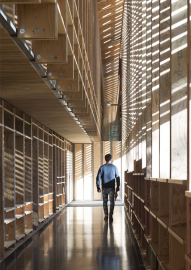 © Michèle&Miquel
© Michèle&Miquel
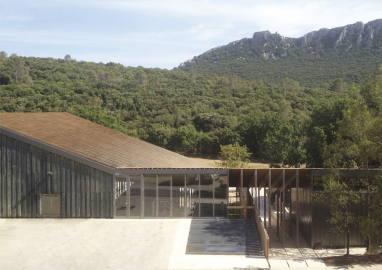 © Michèle&Miquel
© Michèle&Miquel
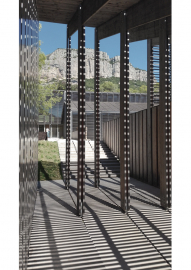 © Michèle&Miquel
© Michèle&Miquel
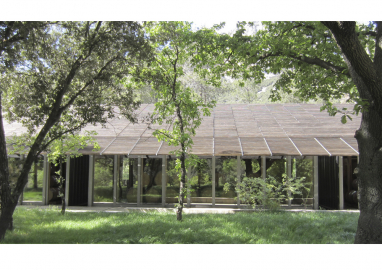 © Michèle&Miquel
© Michèle&Miquel
 © Michèle&Miquel
© Michèle&Miquel

